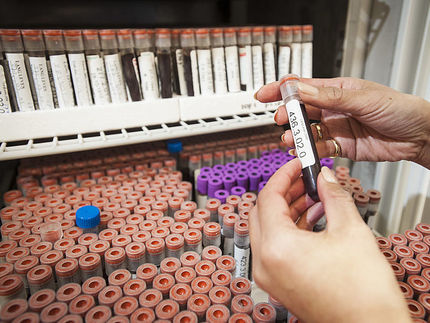Germ-killing sanitizers could have effect on alcohol tests
Slathering on alcohol-based hand sanitizer every few minutes may have one unintended consequence — a positive screen for alcohol use in certain types of tests, a University of Florida study confirmed.
But UF researchers also uncovered a potential biomarker that could allow tests to differentiate between drinking alcohol and exposure to hand sanitizers and other household products, said Gary Reisfield, M.D., an assistant professor in the department of psychiatry with the UF College of Medicine.
The findings, published in the Journal of Analytical Toxicology in March, are particularly significant for people who use hand sanitizers frequently, such as doctors, nurses and other health professionals. For folks in these fields who are in substance abuse programs or required to be tested frequently for alcohol use, chronic use of alcohol-based sanitizers could lead to false positives.
“Many of the hand sanitizers contain ethyl alcohol, which is the same type of alcohol in alcoholic beverages,” said Reisfield, the chief of pain management services in the division of addiction medicine. “The body does not distinguish between drinking alcohol and handwash alcohol.
“Anyone out there who is required to abstain from alcohol needs to be very cognizant about alcohol that may be hidden in products such as handwashing gels, mouthwashes, hairsprays and cosmetics,” he said. “You need to be careful not just what you put in your body but what you put on your body.”
Although blood and breath tests are more commonly used to detect the presence of alcohol in the bloodstream, they only detect what a person drank recently, Reisfield says. Another type of test, called an EtG, measures the level of substances left behind after alcohol is metabolized and can detect use over a longer period of time. The UF study looked at these types of tests, which measure the levels of ethyl glucuronide and ethyl sulfate in urine as indicators of alcohol use.
The investigators examined 11 subjects with no history of alcohol use, looking to see how frequent use of hand sanitizer affected the levels of these substances in their urine.
Study participants used hand sanitizer every five minutes for a 10-hour period for three days in a row, which Reisfield says is similar to what nurses are exposed to while on duty. Their urine was tested at the end of each day and before the start of a new day.
“What we found was nearly all the individuals produced alcohol metabolites consistent with drinking alcohol,” Reisfield said.
When comparing the levels of ethyl glucuronide and ethyl sulfate in the urine of people who used a lot of sanitizer with people who drank alcohol, the researchers also noticed that the level of ethyl sulfate was much lower in the sanitizer group, not coming close to the cutoffs used to indicate alcohol use.
Reisfield says looking at ethyl sulfate could help laboratories more accurately pinpoint alcohol use.
“We will be looking at this further in subsequent studies,” he said. “Ethyl sulfate may be a critical biomarker that has not been looked at in great detail. It may help distinguish between the exposures.
“We really cannot tolerate false positives,” he said. “Falsely accusing someone of alcohol abuse can have potentially devastating effects personally and occupationally.”
Most read news
Other news from the department science

Get the analytics and lab tech industry in your inbox
By submitting this form you agree that LUMITOS AG will send you the newsletter(s) selected above by email. Your data will not be passed on to third parties. Your data will be stored and processed in accordance with our data protection regulations. LUMITOS may contact you by email for the purpose of advertising or market and opinion surveys. You can revoke your consent at any time without giving reasons to LUMITOS AG, Ernst-Augustin-Str. 2, 12489 Berlin, Germany or by e-mail at revoke@lumitos.com with effect for the future. In addition, each email contains a link to unsubscribe from the corresponding newsletter.























































